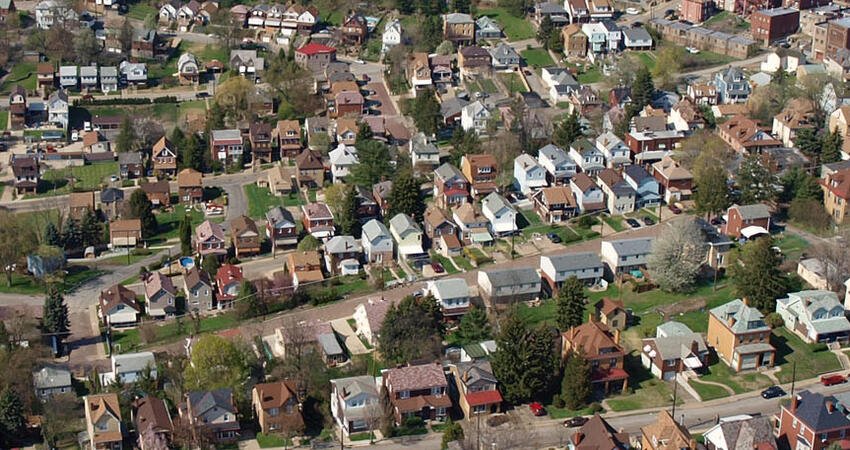
To Improve Lives and Expand Opportunities, Recognize the Power of Housing
by Maya Brennan and Veronica Gaitán
Housing is at the epicenter of all opportunities and outcomes. It is the first rung on the ladder to economic opportunity, and a person’s access to opportunity is linked with that of their community. From health, to economic mobility, to educational opportunity, to racial equity, and beyond, housing shapes families and communities.
Better housing equals better health
Even before we are born, housing status begins to affect our health. Living near the pollution of a congested highway toll plaza is associated with lower birth weight and more premature births than living farther from idling vehicles. As young children, living in or near substandard housing contributes to developmental delays by age 2 and poor health by age 6. Meanwhile, poor-quality housing can exacerbate children’s depressive or aggressive behavior, and further research found that children whose households receive housing assistance have lower levels of lead in their blood than nonassisted children in low-income families. Into adulthood, unhealthy housing drives anxiety, displacement from gentrifying areas is associated with increased hospitalizations, and residential exposure to air pollution has been linked to respiratory and cardiovascular diseases and premature death.
Housing opportunities lead to educational opportunities
Safe, stable, and affordable housing sets children up for academic success—reducing absences and improving task persistence. But housing also establishes which schools a child may attend. In a district with neighborhood school assignment, housing policies opened the door to lower-poverty schools for children in public housing and narrowed the achievement gaps in math and language. But most families with rental assistance remain locked out of neighborhoods with higher-performing schools. School reputation drives up housing costs nearby, and, without policy support for economic inclusion, housing costs limit neighborhood access. One study found that in California’s Fremont Unified School District, an increase in the quality of elementary, middle, and high schools increased the price of an average house by 20 percent—a markup equivalent to the price of a private education. Other research found that homebuyers paid more for a home during the housing bubble when school quality motivated the purchase. Urban planners, policymakers, local governments, and school districts must recognize the effects of schools on residential segregation to ensure educational equity—and the potential for housing policies to disrupt that connection.
Housing stability and services provide a critical economic boost
Without stable, quality, and affordable housing, people must make trade-offs between their family’s education, health, and finances. Rental assistance programs can both alleviate immediate economic strain and open the door to upward mobility. Housing subsidies improve outcomes for homeless families, including reducing economic distress and food insecurity. People who receive rental assistance and participate in a high-impact Family Self-Sufficiency program can build assets. Early evaluation of a development-wide job support program called Jobs Plus found that residents earned 16 percent more per year than residents in comparison developments that did not offer the same intensive supports. Further, children in low-income households may experience long-term economic benefits, such as higher annual earnings by their midtwenties, from being supported by a rental subsidy for more of childhood
When residents prosper, so do their communities. But there’s a problem.
No US county has enough affordable rental housing for its lowest-income residents. Meanwhile, rental demand is increasing among all income groups—nearly half of today’s renters are cost-burdened, and nearly a quarter are severely cost-burdened. In fact, in 2017, the lowest-income households with children had only $490 available each month after paying housing expenses—far less than the amount needed for food, health care, and other basic living expenses.
And access to homeownership is still unequal. Borrowers with low to moderate credit are getting boxed out of mortgage lending, and the fear of high down payments, extreme rent burdens that make saving even for a low down payment difficult, and the decline in home affordability all present significant barriers to homeownership, particularly for low-income people. Black homeownership rates have declined to their lowest levels since the 1960s because of decades of structural racism in housing policy and practice. And though Latinx homeownership rates have increased the past few years, a wide gap still exists between homeownership rates among US households of Latinx heritage and non-Latinx whites.
The US is experiencing a multipart housing crisis, which affects all of us. The wide-ranging problems include affordability, quality, and stability—for renters, homeowners, and people with no home at all. As a complex set of challenges, the US housing crisis can benefit from everyone's contribution to the solutions.
So what can be done?
Professionals in fields other than housing are increasingly recognizing housing’s central importance and should consider incorporating housing-informed partnerships and policies into their services. Meanwhile, the housing field should identify ways to change business as usual to deliver even greater benefits and to articulate the value of housing to potential collaborators and funders. Whether your mission is to expand educational opportunities, improve health outcomes, boost economic well-being, or close the racial equity gap, it all comes back to housing.
Photo by trekandshoot/Shutterstock


